Waswo X. Waswo’s solo booth at the 2023 India Art Fair caused a bit of a stir. His intricate paintings combined realism and elements of miniature with his brand of dry humour — from a gouache and gold on wasli paper depicting pages from a burning storybook, to a detailed five-piece suite of a train at a station. The subject matter was topical too, alluding to Godhra, M.F. Husain’s persecution, and Kalki and the Kal-Yug as metaphors for our chaotic times.
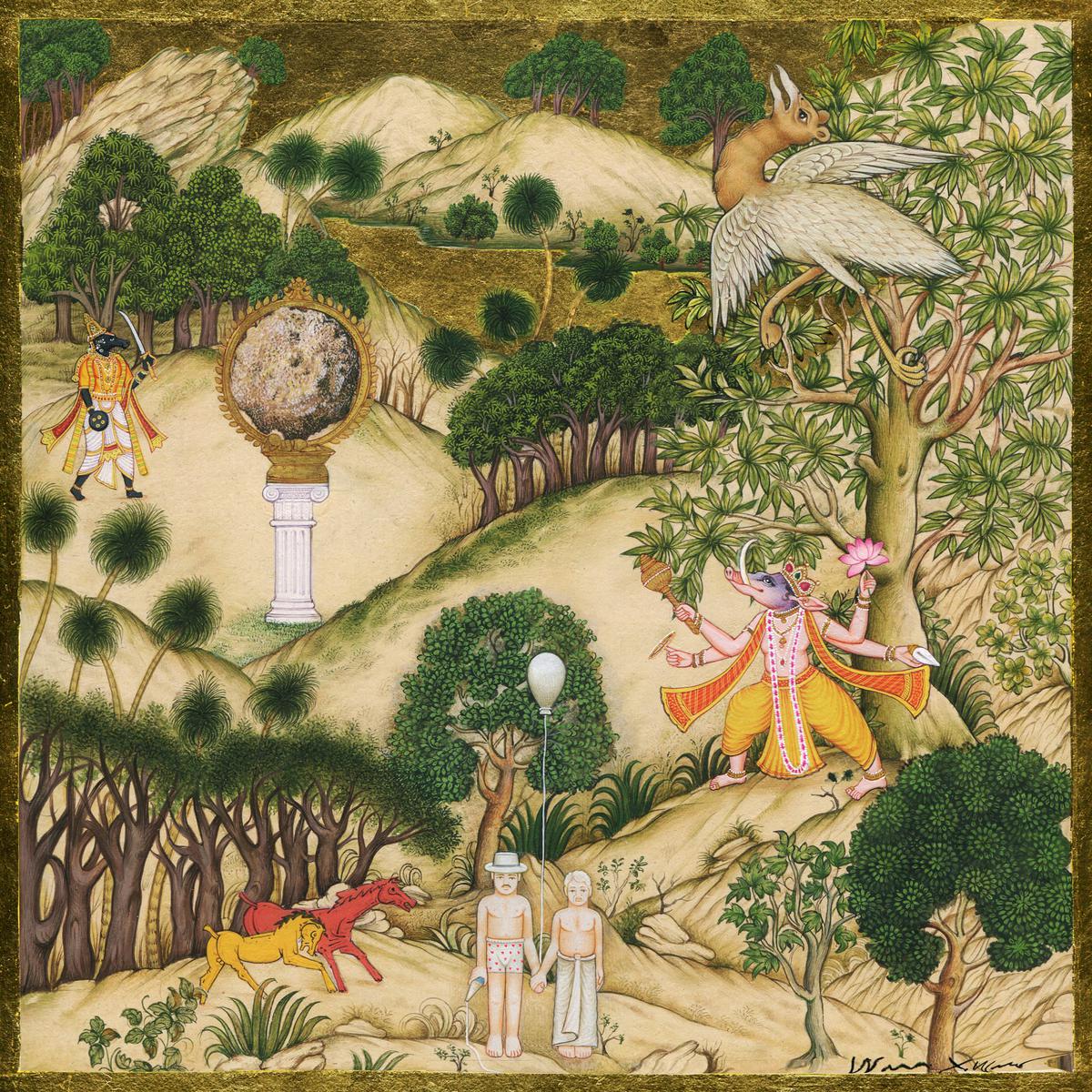
End of the Kala Yug
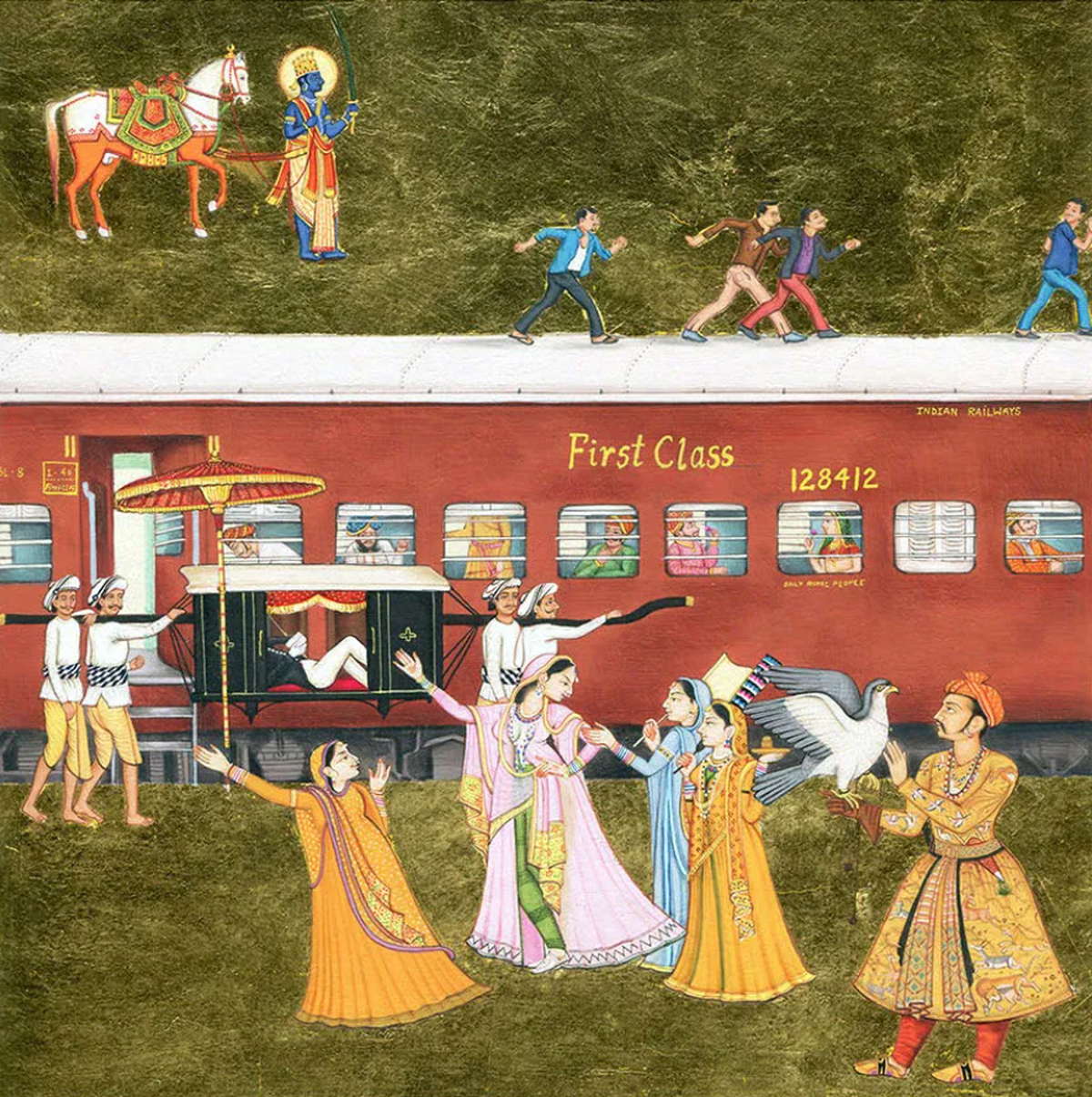
Last Ride in the Wild, Wild East
The Udaipur-based American and his collaborating team of local artisans walked in on the opening day wearing the signature white fedoras that the protagonist of his works usually dons. But, despite the display of camaraderie, there was change brewing behind the scenes. Shortly after the Art Fair, two of Waswo’s long-time collaborators left to pursue their own careers. (Their names have been withheld for legal reasons.) The catalogue featured two new names: Chirag Kumawat, a dab hand at realistic style painting, and Dalpat Jingar, a border artist and miniaturist.
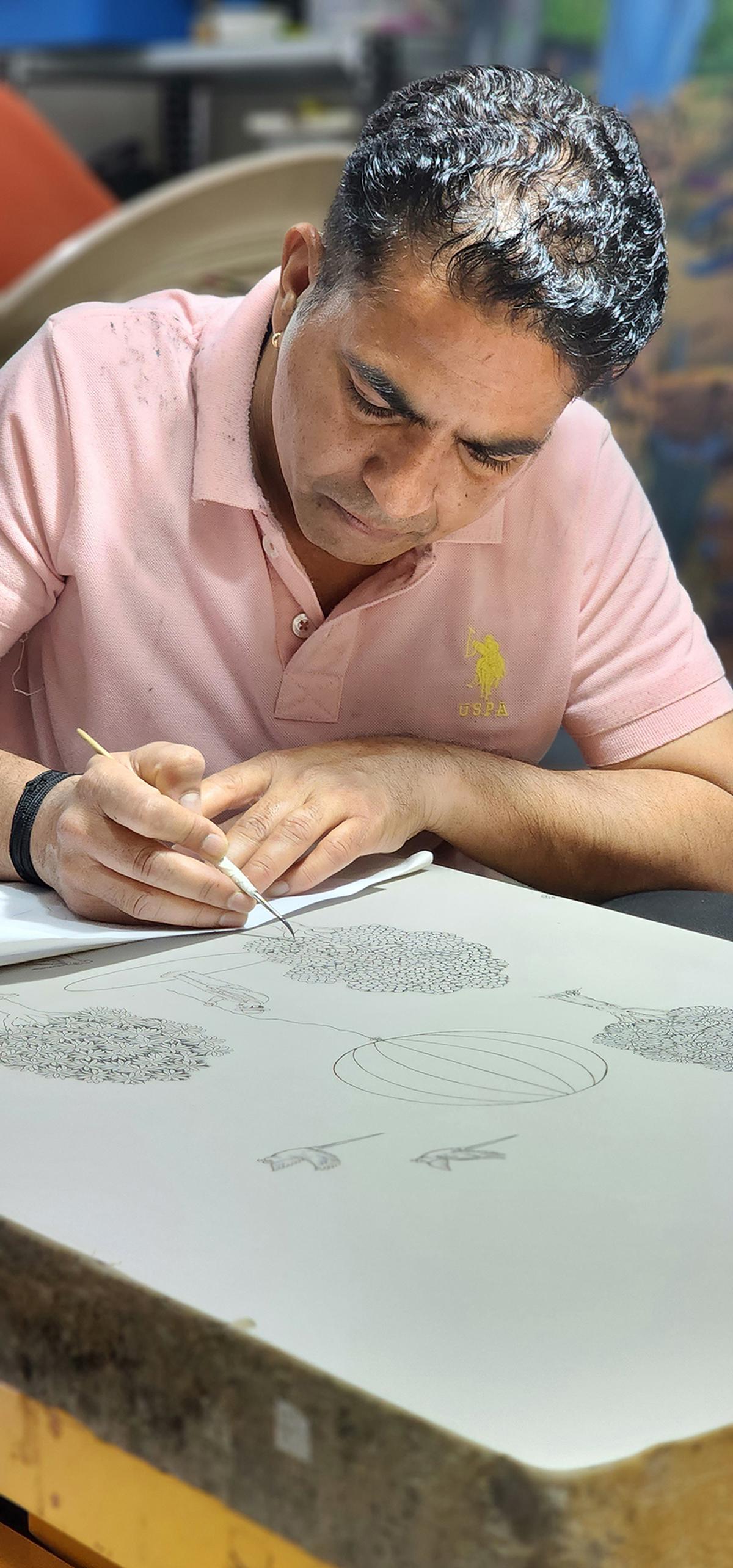
Dalpat Jingar at work
“I am excited about the new collaborations, but, of course, doubtful too. What has been lost, and what has been gained?” ruminates the artist, who has exhibitions coming up in London this month, and plans in motion for a show in Mumbai next year. Incidentally, Waswo is one of the few artists who publicly validates the inputs of his artisan collaborators. The majority do not acknowledge them, treating them instead as fabricators and craftspeople.
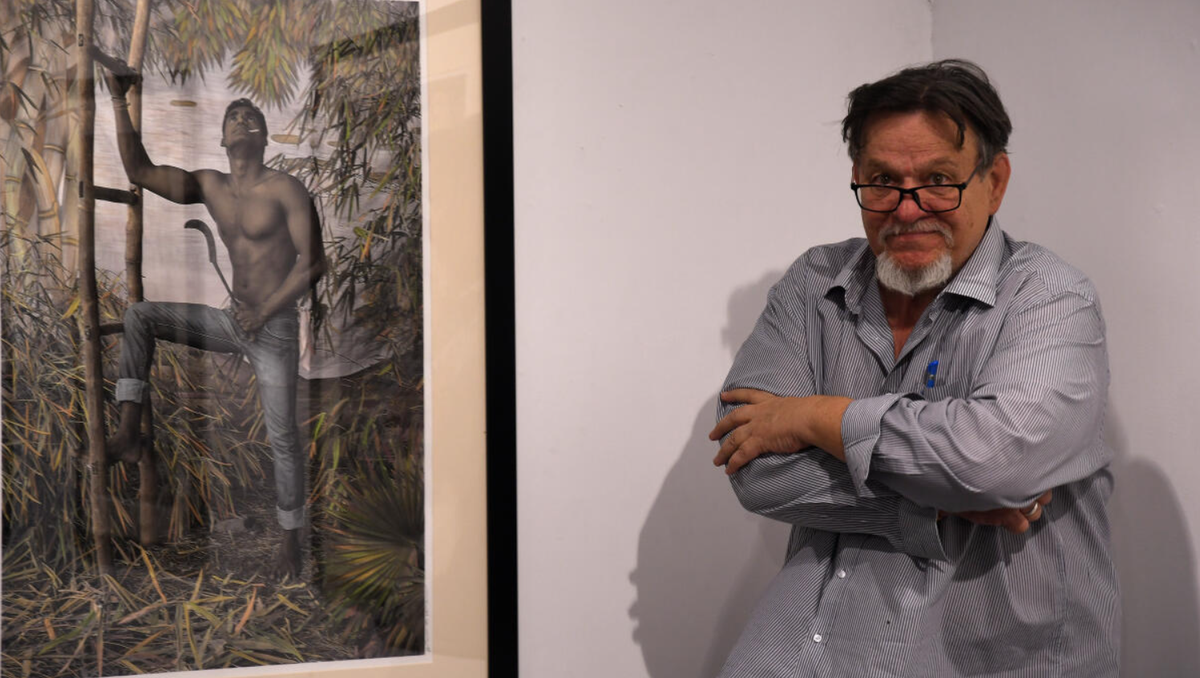
Waswo X. Waswo
| Photo Credit:
H. Vibhu
Maintaining the integrity
In the dictionary, an artist is defined as “a person who creates art [such as a painting, sculpture, music, or writing] using conscious skill and creative imagination” and an artisan as “a worker who practices a trade or handicraft”. This hierarchy has been starkly visible in the art world for many years.
“It becomes hard for artists to acknowledge their [artisans’] collaboration because of copyright issues and legal infrastructure. Also, the hierarchies are already entrenched in the art world,” explains gallerist Renu Modi, the director of Espace in New Delhi who represents Waswo X. Waswo. By and large, the copyright to a collaborative artwork is held by the artist because they contribute infrastructure, finance and are usually more skilled and confident in dealing with the legal side of the issue.
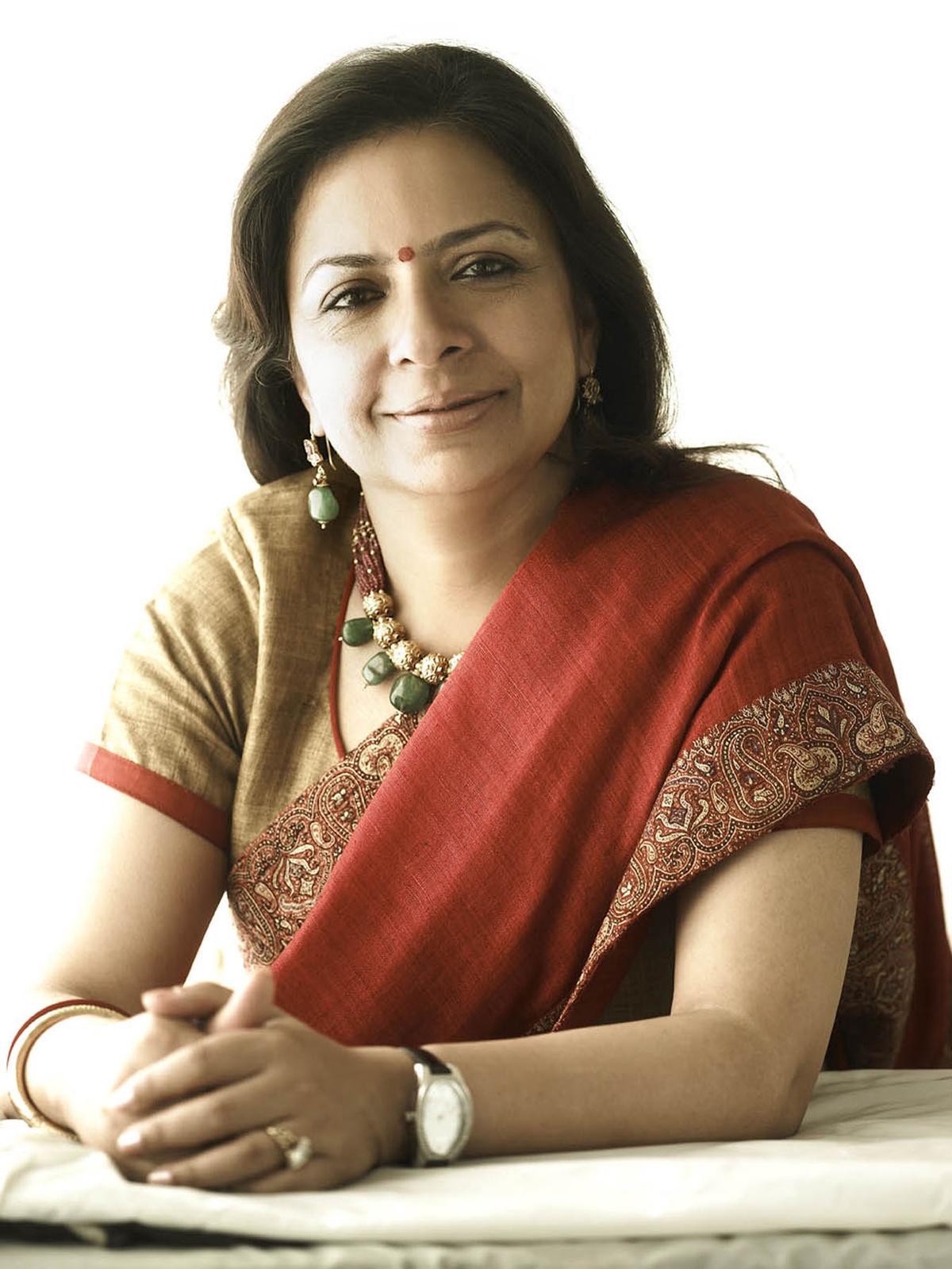
Renu Modi
Artist Arjuna Kochhar, for instance, collaborates with Kangra artisans to render his raga-based paintings in the miniature style. He works with acrylic on linen, and has fused the Kangra with the Thangka style to render non-traditional imagery, including the Buddha meditating in forests of demons and wild animals.
“When the Kangra artists mentioned that the works were getting a tremendous response, and that they were being requested to make large canvases, much like the ones that they were assisting me with, I realised that intellectual property issues need to be addressed formally, or else there would be imitation,” he says. While his intent — to incorporate the traditional arts, which have become craft because of repetition without innovation, into contemporary art — is encouraging, “if the traditional artists begin imitating our innovations and supplying replicas of these paintings, then this approach becomes problematic and non-viable”, shares Kochhar.
More dialogue on the issue is needed, where the integrity of both is held in a respectful and empowering position.
“In contemporary times, artists who are working in a collaborative set up do recognise the input of the artisans and their craftsmanship, but the recognition is undermined because of restrictions of institutional frameworks and legal systems and of course, the status quo.”Bhavna KakarDirector, Latitude 28
‘The artist is the decision maker’
Things seem to be shifting now, with artisans pushing the envelope for better recognition, treatment and pay. I recall Ranjita Dhal, who worked with artist Shivani Aggarwal on the Barbil Art Project in Odisha a little over a year ago, not being shy in coming forward with her ideas and inputs to create the on-site installation in sabai grass. Bijay Parida, the award-winning Pattachitra artist, also weighed in during his collaboration with Anindita Bhattacharya. The biannual workshop was conceptualised by Jagannath Panda and organised by the Utsha and Arya Foundation
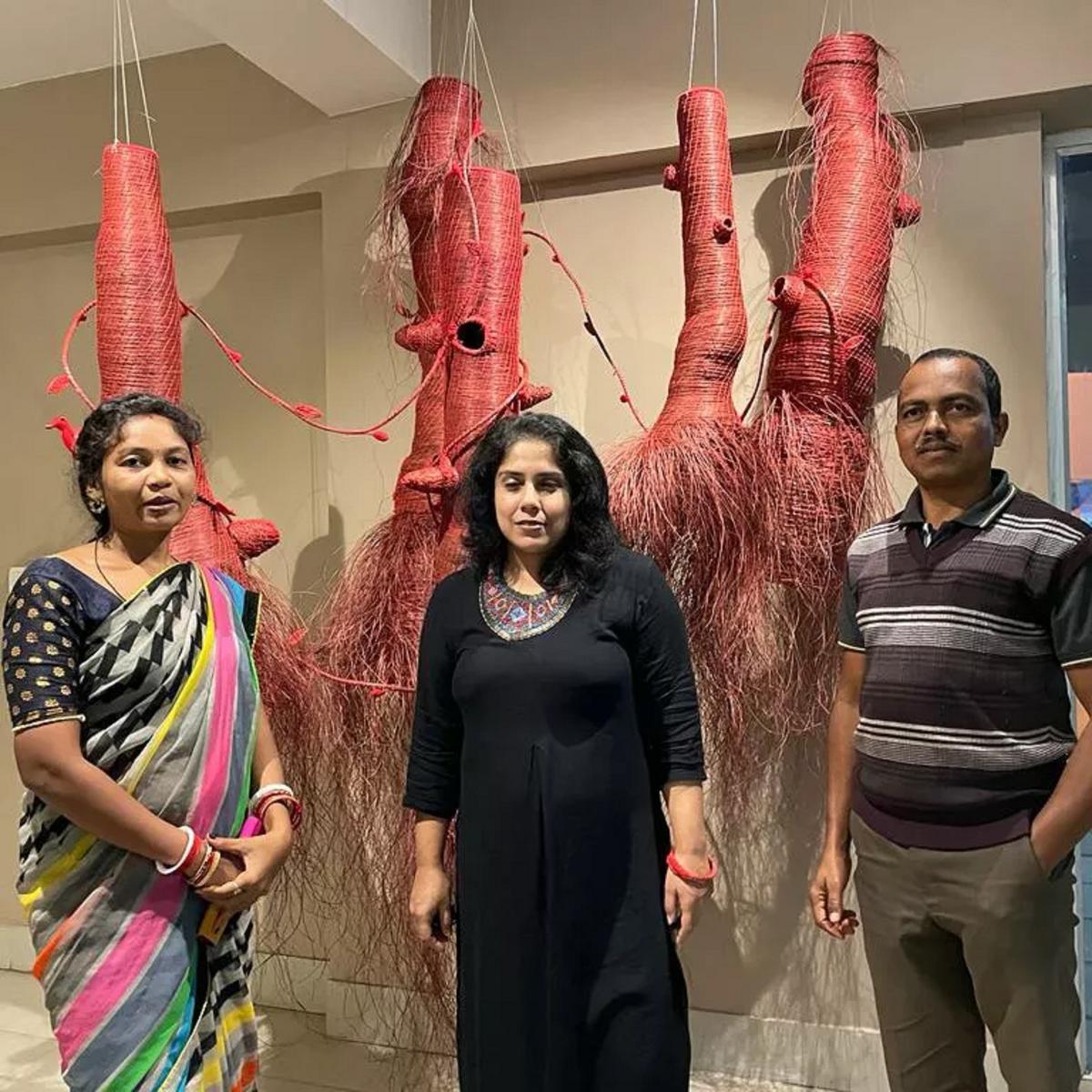
Shivani Aggarwal and Ranjita Dhal (far left) at the Barbil Art Project in Odisha
Shivani Aggarwal with Ranjita Dhal
.“There are multiple models that exist around this — from contemporary artists employing artisans, giving creative input [or not], to recognising artisans as equal collaborators and sharing credit and splitting the sales equally. Each model has its inherent challenges, but eventually the artist is the decision maker,” says Anubhav Nath, the curatorial director of Ojas Arts, which is known for presenting contemporary art works of both artists and artisans.
Recently, I was drawn into a discussion about the art-craft union while interacting with U.K.-based artist Keith Khan, who showed his new media artworks, Sugar Cane Cutter Legs, at Nature Morte last month. He shared that “art is a process with many inputs and influences, but where actual collaboration has taken place I have always acknowledged and given credits”. Besides his upcoming projects, such as a project with British fashion house Burberry to create textiles for the Leeds Festival in August, he is contemplating dipping into Indian art and culture, and taking on a collaborator.
Preserving craft
The importance of preserving the arts of the craftspeople/artisans cannot be emphasised enough, given that their traditional methods are passed on orally and manually from one generation to another, and many of their practices are dying. Panda, of the Barbil Art Project, recalls visiting Bellaguntha in Odisha seven years ago to study the brass fish (a craft that dates back to 9 AD). It’s still a main attraction of the city, but he found that the craftspeople were not getting any patronage. “Without support, they were losing interest and love for their own craft,” he says. This led him to create BAP, and its events have since encouraged many artisans such as Ranjita Dhal to collaborate with artists on national and international projects.
Is change in the offing?
Over the years, many artists, including Gulam Mohammed Sheikh and K.G. Subramanyan (1924-2016), and younger contemporaries such as Anindita Bhattacharya, Gopa Trivedi, and Saira Wasim have drawn on the miniature tradition. Other regional art practices such as the Kalighat Pats — popularised by the likes of Jamini Roy — and warli painting, pattachitra and gond art have also been approached by artists. The late Jagdish Swaminathan (1928-1994) was a key figure in bringing forward Gond-Pardhan artist Jangarh Singh Shyam and Bhil artist Bhuri Bai.
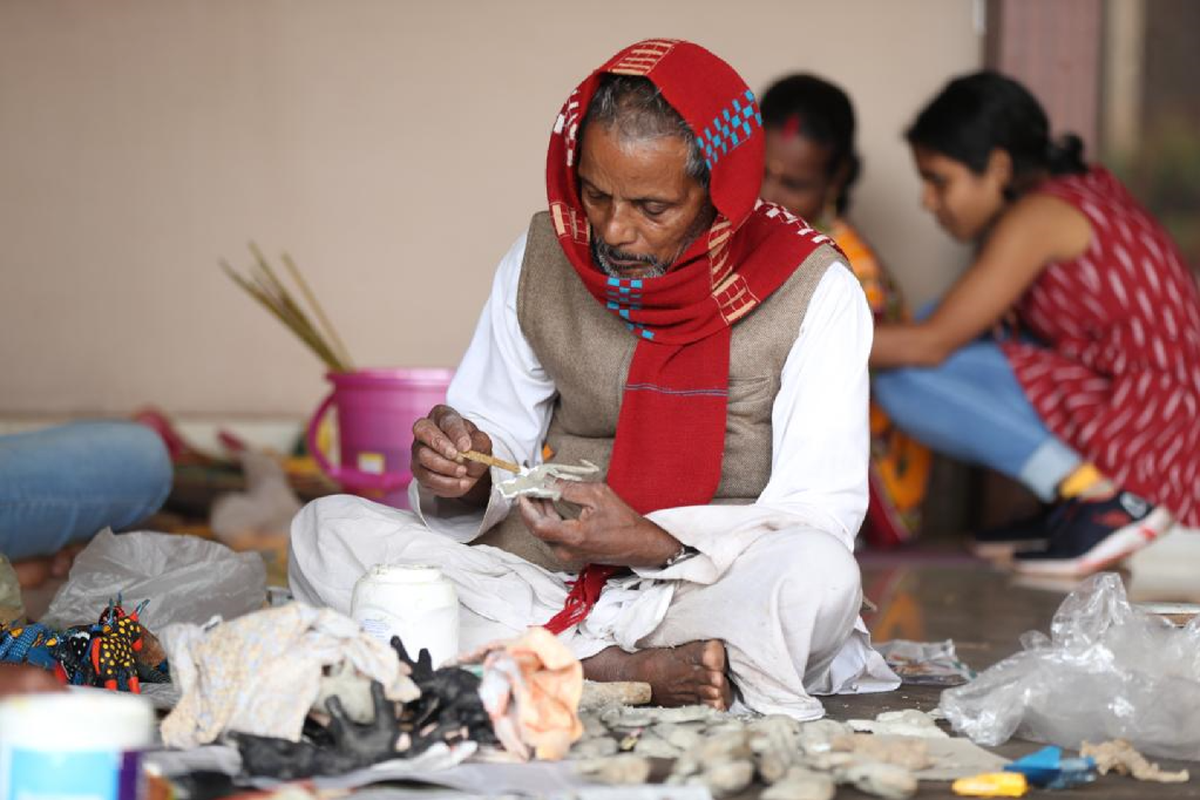
Purusottam Mohapatra
But for every artisan acknowledged for their work or who’ve had independent showings, there are more instances of people who’ve been unacknowledged. And a few do not want to deal with the legalities required for an equitable sharing of intellectual as well as monetary space. “We often find it more comfortable to stick to what we know and earn from it,” says Chandrasena Majhi, a paddy craft artisan. Purusottam Mohapatra, a papier-mâché artist, adds, “Often, we just work with artists like contractors and, as long as we get paid, we haven’t cared about ‘acknowledgement’. But it would be nice to see that change.” Mohapatra is one of the last in his family to follow the traditional craft.
The writer is a critic-curator by day, and a visual artist by night.
Stay connected with us on social media platform for instant update click here to join our Twitter, & Facebook
We are now on Telegram. Click here to join our channel (@TechiUpdate) and stay updated with the latest Technology headlines.
For all the latest Art-Culture News Click Here
